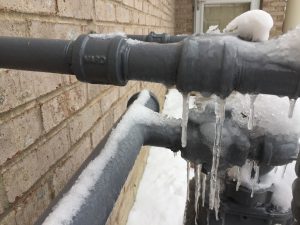Tips for Preventing Frozen Plumbing in Winter: Specialist Insights
Tips for Preventing Frozen Plumbing in Winter: Specialist Insights
Blog Article
They are making a few good pointers relating to How to prepare your home plumbing for winter weather in general in this article beneath.

Cold weather can wreak havoc on your plumbing, particularly by freezing pipelines. Below's how to stop it from taking place and what to do if it does.
Intro
As temperatures drop, the threat of icy pipes increases, possibly causing expensive repairs and water damage. Understanding just how to avoid frozen pipelines is important for house owners in cold environments.
Recognizing Frozen Pipelines
What creates pipelines to freeze?
Pipes freeze when subjected to temperatures listed below 32 ° F (0 ° C) for expanded durations. As water inside the pipes ices up, it increases, putting pressure on the pipe wall surfaces and potentially triggering them to burst.
Threats and damages
Icy pipes can cause supply of water disturbances, home damages, and pricey fixings. Ruptured pipes can flooding homes and create substantial structural damage.
Indicators of Frozen Pipeline
Identifying icy pipes early can prevent them from bursting.
Just how to identify icy pipes
Seek reduced water circulation from faucets, uncommon odors or sounds from pipes, and noticeable frost on exposed pipelines.
Avoidance Tips
Protecting at risk pipes
Cover pipelines in insulation sleeves or use warm tape to safeguard them from freezing temperature levels. Concentrate on pipes in unheated or outside locations of the home.
Home heating strategies
Keep interior areas appropriately heated up, specifically areas with plumbing. Open up cabinet doors to enable cozy air to circulate around pipes under sinks.
Safeguarding Outside Pipes
Yard pipes and exterior taps
Detach and drain garden hoses before winter. Mount frost-proof spigots or cover outdoor taps with shielded caps.
What to Do If Your Pipes Freeze
Immediate actions to take
If you believe icy pipes, keep taps available to alleviate pressure as the ice melts. Make use of a hairdryer or towels soaked in warm water to thaw pipelines slowly.
Long-Term Solutions
Architectural adjustments
Take into consideration rerouting pipes far from outside walls or unheated locations. Add additional insulation to attics, basements, and crawl spaces.
Updating insulation
Invest in high-grade insulation for pipes, attics, and wall surfaces. Proper insulation helps maintain regular temperature levels and lowers the threat of frozen pipes.
Conclusion
Preventing icy pipelines calls for positive steps and quick feedbacks. By recognizing the causes, signs, and safety nets, house owners can safeguard their pipes throughout cold weather.
5 Ways to Prevent Frozen Pipes
Drain Outdoor Faucets and Disconnect Hoses
First, close the shut-off valve that controls the flow of water in the pipe to your outdoor faucet. Then, head outside to disconnect and drain your hose and open the outdoor faucet to allow the water to completely drain out of the line. Turn off the faucet when done. Finally, head back to the shut-off valve and drain the remaining water inside the pipe into a bucket or container. Additionally, if you have a home irrigation system, you should consider hiring an expert to clear the system of water each year.
Insulate Pipes
One of the best and most cost-effective methods for preventing frozen water pipes is to wrap your pipes with insulation. This is especially important for areas in your home that aren’t exposed to heat, such as an attic. We suggest using foam sleeves, which can typically be found at your local hardware store.
Keep Heat Running at 65
Your pipes are located inside your walls, and the temperature there is much colder than the rest of the house. To prevent your pipes from freezing, The Insurance Information Institute suggests that you keep your home heated to at least 65 degrees, even when traveling. You may want to invest in smart devices that can keep an eye on the temperature in your home while you’re away.
Leave Water Dripping
Moving water — even a small trickle — can prevent ice from forming inside your pipes. When freezing temps are imminent, start a drip of water from all faucets that serve exposed pipes. Leaving a few faucets running will also help relieve pressure inside the pipes and help prevent a rupture if the water inside freezes.
Open Cupboard Doors
Warm your kitchen and bathroom pipes by opening cupboards and vanities. You should also leave your interior doors ajar to help warm air circulate evenly throughout your home.

We had been brought to that editorial about Preventing and dealing with frozen pipes from an associate on another site. Enjoyed our blog posting? Please quickly share it. Help somebody else find it. I love your readership.
Book Maintenance Report this page